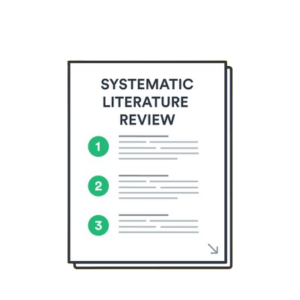How To Write A Systematic Review
- State aims and objectives with a standardized methodology.
- Attempt to identify researches that meet the eligibility criteria.
- Evaluate the logic of the study’s findings.
- Synthesize the findings of the studies in a systematic way.
How To Write A Systematic Review: Here we have provided you with a comprehensive guideline for writing a high-quality systematic review.
- Formulate a research question: It is important to know if you will have to write a systematic review before beginning your project. Research to see if anyone has already written a review on the topic you have picked. Visiting different librarians will help you to find out about existing studies on the matter. A systematic review requires sufficient resources and time; it could take up to a year to finish. Ask yourself if you have the resources and time to conduct the review. Look for a team of collaborators that you can work with to minimize the risk of bias. The paper should start with the topic stated in a clinical question framework. The research question should address specific basic elements, and they should be interesting, relevant to your work, and well-defined. When defining the research question in clinical studies, the standard tool is PICO (Population, Intervention, Comparison, Outcome).
- Develop a research protocol: A research protocol is a detailed outline of how you will study a health science issue. The following details should be included in a systematic review protocol:
- Objectives of your work.
- Specifications of the processes and methods that you will use.
- Eligibility criteria for studies like study design.
- Data extraction technique from individual studies.
- The analyses that will be done.
After writing your review protocol, you should consider registering it with PROSPERO. PROSPERO is a site that accepts health-related outcome reviews with topics such as health and social care, welfare, public health, education, international development, and crime and justice. Registration of the protocol earlier guarantees transparency in the investigation process and avoids duplication issues.
- Carry out a literature search: When creating your search strategy, the Institute of Medicine advises students to partner with a librarian. Make sure you conduct a thorough literature search. Your goal should be to find relevant sources with a distinct amount of data on your topic. The benefits of using a librarian are that they will help you find databases pertinent to your project and help you develop a detailed research strategy. It would also be useful to search for information outside models used to publish standard academic work, referred to as grey literature. These may include talking to experts in the field, searching pharmaceutical company web pages, and browsing conference proceedings. The significance of grey literature is that it reduces the likelihood of publication of negative results that may affect your findings’ reliability. Detailed records of the searched documents should be kept. Such details include:
- The databases and the years they were covered.
- Dates of the first run of the searches and when they were updated.
- Number of obtained results.
- Details of the strategies used and the search terms.
You may use a citation manager. It is a tool that generates bibliographies, eliminates duplicate records, and shares citations with teams.
- Choose studies for protocol: Two reviewers should screen the studies using the criteria mentioned in your protocol since the task is tiresome. This will reduce the chances of error. The first screening process should be based on abstracts and titles, while the second round should be done by thoroughly reviewing articles selected for the study. The systematic review will have a better quality if two reviewers do the task because of their different opinions. Using the eligibility criteria, retrieved articles to be further assessed should be selected, minimizing the chance of using non-relevant articles. A log of excluded studies and the reasons why they were omitted should be kept by the reviewers.
- Appraise studies for protocol: A team of not less than two reviewers should assess the methodological quality of the full-text documents selected. You need to verify that the studies meet the protocol criteria by using a checklist. Below are some questions you may want to consider;
- If the patients were grouped by random allocation.
- If the allocation sequence was not revealed to clinicians and patients.
- If the conclusions of the investigation were influenced by bias.
- Extract data: In this section, you need to collect data by creating a data extraction form. If there’s data presented in graphs, you should use proper software tools such as Web plot digitizer to extract them. Assign a minimum of two reviewers to extract information from the included articles. It is recommended to extract adjusted and non-adjusted data to enable pooling them during analysis. Cochrane contains numerous templates that you can adapt to your work. A data-checking step should also be included in the systematic review because of human errors. It involves comparing included full-texts with their counterparts in the extraction sheet to detect any mistakes.
- Analyze results: After the extraction of data, the next step would be statistical data analysis. The methods used to combine and summarize the findings of included articles vary. You need to create a table of study data and prepare a forest plot to demonstrate treatment effects’ relative strength. When analyzing data, you should look at its variation across studies and the sensitivity of results. If possible, run a meta-analysis of the findings. Besides, you should also list and avail the excluded studies to readers in this part.
- Interpret results: Discuss the limitations and biases, implications for future research, applicability, the strength of available evidence, and economic effects.
We understand it well and aim to make writing a systematic literature review easy. You only need to share your assignment details with us. Our academic writers offer custom systematic review services, such as drafting search strategies that work and identifying and screening articles for review.
Get a 15% Discount on Your First Order!


